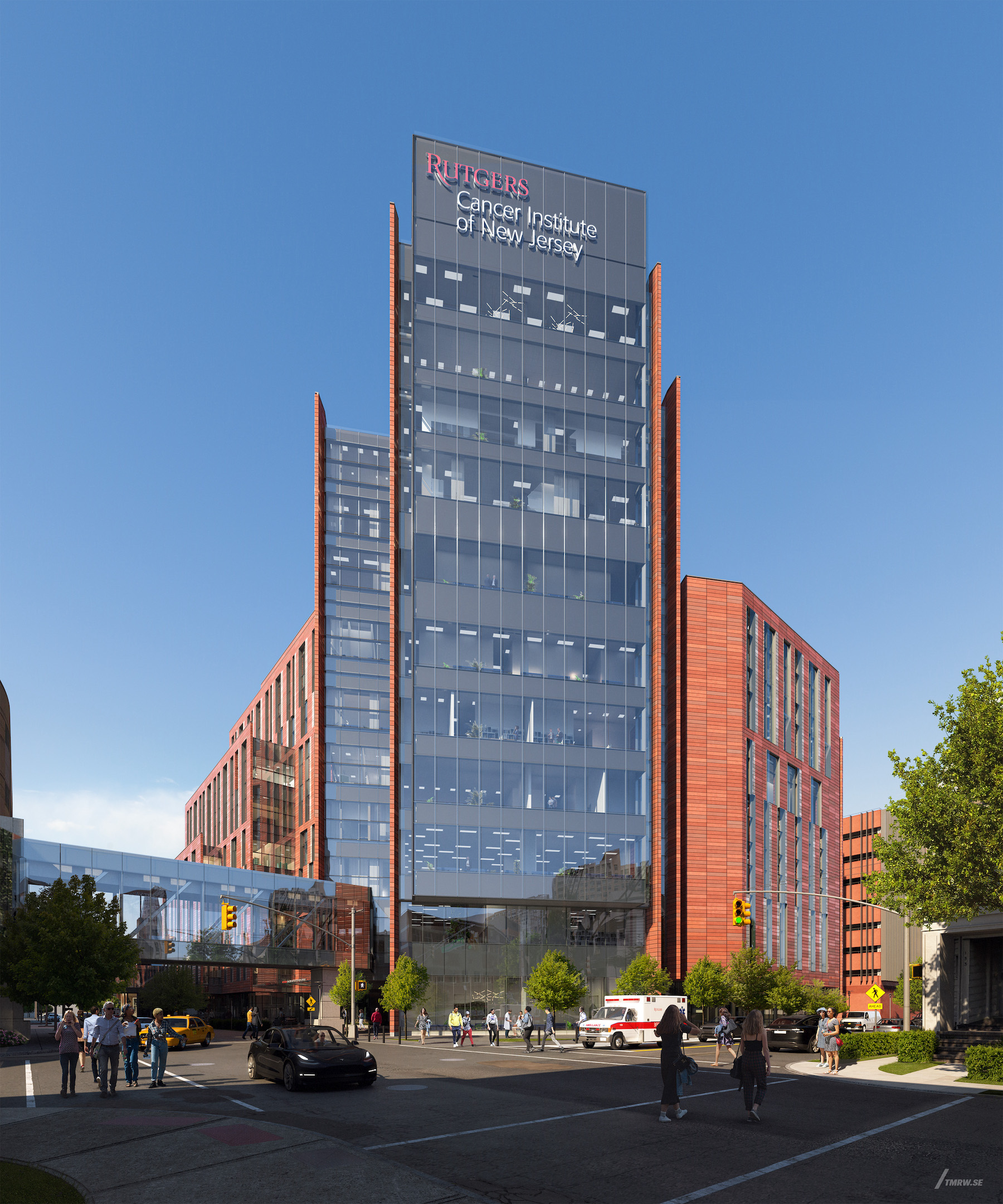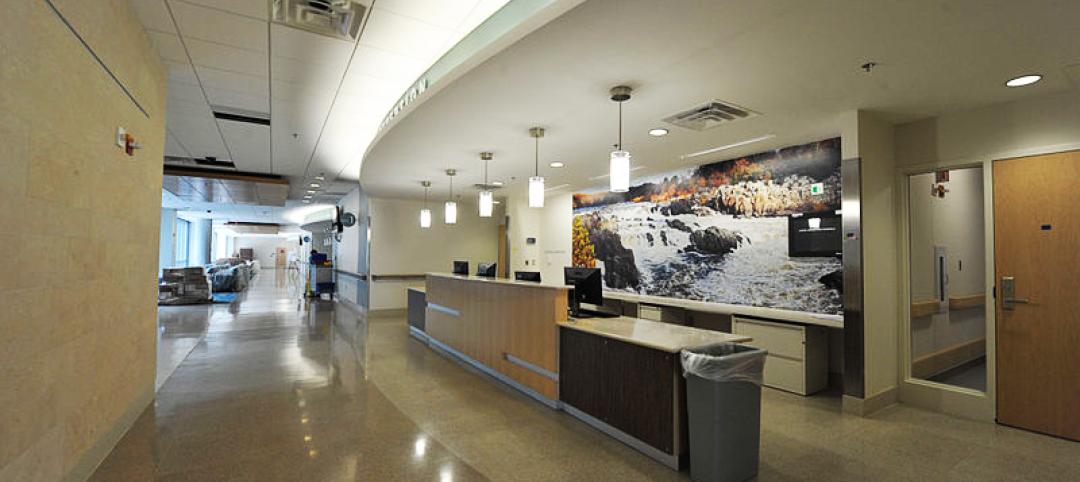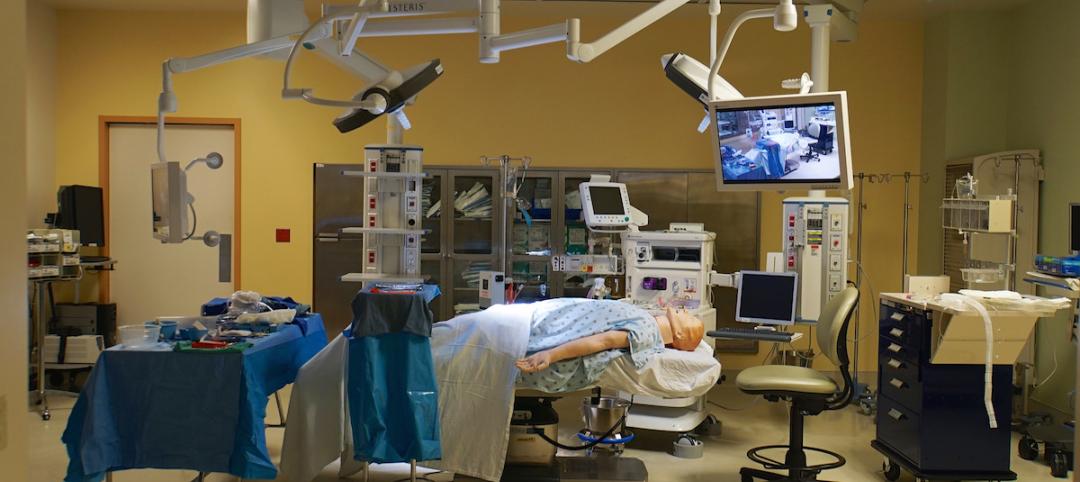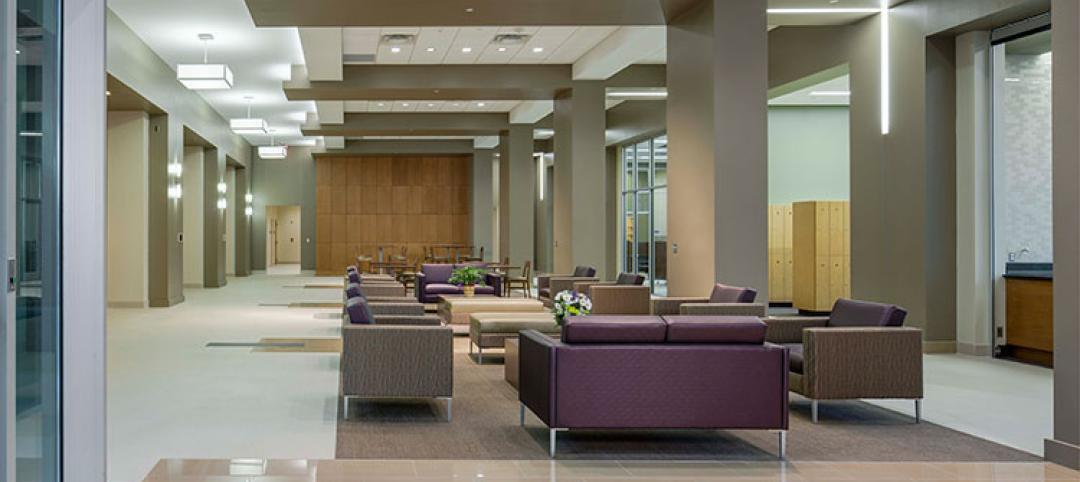Early next year, the New Brunswick (N.J.) Development Corporation, in collaboration with RWJBarnabas Health and the Rutgers Cancer Institute, is scheduled to open the Jack & Sheryl Morris Cancer Center, which will be the Garden State’s first National Cancer Institute-designated Comprehensive Cancer Center.
This 12-story, 520,000-sf, $750 million project, which broke ground in June 2021 and topped off in November 2022, will be a freestanding building that combines in- and outpatient services with research. A skywalk will connect the Cancer Center to the existing Rutgers Cancer Institute of New Jersey and the Robert Wood Johnson University Hospital.
The new building will include 96 inpatient beds on three floors, with one entire floor for surgical services. There will also be 84 infusion bays, 74 exam rooms, and state-of-the-art imaging and diagnostic equipment that includes four linear accelerators. The Cancer Center will offer in- and outpatient radiation oncology services.
More than 100 scientists will have access to 10 research labs within the Cancer Center.
The Cancer Center will be integrated into RWJBarnabas’ “Navigator” program, which allows patients to take a more active part in managing their treatment and longer-term healthcare.
The Building Team for the Cancer Center includes HOK (architect and designer), a joint venture between Jingoli Construction and LF Driscoll (GC), and O’Donnell & Naccarato (SE). As part of this project, RWJBarnabas picked up the $55 million tab to build Blanquita B. Valenti Community School, a three-story elementary school for 800 students that opened last September. Jack Morris, the Cancer Center’s benefactor and namesake, is the founding chairman of RWJBarnabas Health, and with his wife leads Edgewood Properties, a property development and management firm.
An innovation hub in the city’s core

The Morris Cancer Center isn’t the only project that’s positioned to reshape New Brunswick’s reputation, urban landscape, and economy, at a time when this city of 56,400 is only growing marginally and has struggled to maintain its jobs base. After years of languishing as a massive excavation hole, The Health and Life Science Exchange (HELIX NJ), a four-acre innovation district which was co-developed by SJP Properties and the New Brunswick Development Corporation, finally began construction last July and is scheduled to start opening next year.
HELIX’s $650 million first phase, a 13-story 573,400-sf building, will house an Innovation HUB, Rutgers Robert Wood Johnson Medical School (on four floors), and a research facility, as well as retail space, a 10,000-sf market hall, and a 3,000-sf restaurant that opens onto a 70-ft-wide plaza.
Rutgers University, which will occupy three-quarters of HELIX’s first building, has committed $270 million to recruit and retain 80 translational research investigators to work in HELIX.
HELIX’s $731 million second phase, designed by HDR, will include 600,000 sf of built-to-suit office and lab space. (Last month, Nokia announced plans to move Nokia Bell Labs into HELIX.) Phase 3 will be a mixed-use 42-story building with 220 housing units. Jingoli Construction is HELIX’s general contractor.
HELIX was the first program approved under the New Jersey Economic Development Authority's Aspire tax credit program, which was created by legislation passed in 2020.
Related Stories
Healthcare Facilities | Dec 29, 2015
Wood materials aid in patient recovery in healthcare environments
Report says patient recovery times, pain perception, stress levels improve where natural materials are present.
Healthcare Facilities | Dec 15, 2015
What the Bipartisan Budget Act of 2015 means for healthcare real estate development
CBRE Healthcare's Charles Maggio breaks down the impacts of the new legislation, which affects outpatient facilities.
Greenbuild Report | Dec 10, 2015
Sustainable performance: Hospital systems’ new financial and marketing imperative
Several years ago, the healthcare industry would have ranked in the bottom tier among adopters of sustainable design and construction. Now, it is outpacing other nonresidential sectors in moving toward high-performance, healthy environments.
Healthcare Facilities | Dec 2, 2015
Check out Perkins+Will’s ultra-transparent research center for the Allen Institute for Brain Science
The design orients labs like flower petals around a large light-filled central atrium; the effect is like the inside of a bee hive where researchers can see each other and what they are doing.
Healthcare Facilities | Nov 6, 2015
Paint company unveils product that can kill bacteria in hospitals
The new product from Sherwin-Williams, called Paint Shield, is said to not only kill over 99.9% of dangerous bacteria, but also reduces growth of “common microbes.”
Healthcare Facilities | Nov 4, 2015
Hospital designers get the scoop on the role of innovation in healthcare
“Innovation” was the byword as 175 healthcare designers gathered in Chicago for the American College of Healthcare Architects/AIA Academy of Architecture for Health Summer Leadership Summit.
Healthcare Facilities | Nov 2, 2015
Final funding comes through to complete over-budget and behind-schedule Denver VA Medical Center
The Department of Veterans Affairs, cited for its mismanagement, is stripped of control over future major construction.
Healthcare Facilities | Oct 23, 2015
Mortenson study: Healthcare providers optimistic, but want changes to Affordable Care Act
The 2015 Mortenson Healthcare Industry Study found that 76% of providers are at least optimistic about the future of healthcare, but eight out of 10 would like to see changes made to ACA.
Healthcare Facilities | Sep 29, 2015
The ever changing physician real estate market
In the United States, the environment where outpatient healthcare is being delivered is as dynamic and diverse as the more high profile office and retail markets, writes CBRE Healthcare's Nelson Udstuen.
Healthcare Facilities | Sep 21, 2015
5 reasons healthcare organizations are implementing finish standards on construction projects
The desire for improved patient satisfaction, staff retention, and turn-key maintenance are among the top reasons more healthcare groups are implementing finish standards in their spaces, according to VOA Associates' Lauren Andrysiak.

















